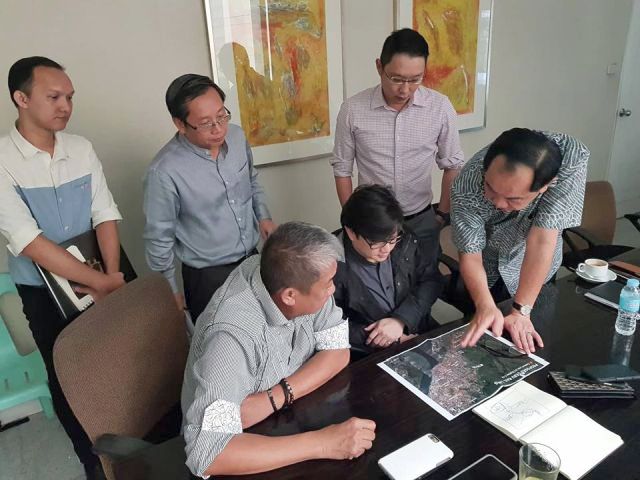For Cebu City Administrator Nigel Paul Villarete, projecting the Bus Rapid Transit (BRT) and Light Rail Transit (LRT) to be operational by 2020 is “not realistic.”
“There’s no way commercial operations can start on 2020. If they can have commercial LRT operations by 2020, I will resign from my job. Let’s not fool the people with promises we cannot keep,” Villarete said in a message reply to Cebu Daily News on
Sunday.
Transportation Secretary Arthur Tugade and Presidential Assistant for the Visayas Michael Lloyd Dino met with technical consultants on Friday to discuss the implementation of the two projects. In the meeting, the officials agree that the first phase of both projects will be operational by 2020.
Department of Transportation Communications Director Goddess Hope Libiran earlier told CDN that civil works for BRT will commence in 2019.
Villarete, an urban planning and urban policy expert, said the BRT, which was supposed to be implemented in 2014 yet, could barely hit its target implementation considering the over three years of delay that it has incurred.
“Commercial operations of the BRT in 2020 is not a doable target. The original target was june 2021 for phase 1 and that was prior to the delays,” said Villarete.
“That [June 2021] may still be achieved if a realistic catch-up program is instituted but still very difficult,” he added.
Multiple factors
But should DOTr be able to have the phase 1 of both BRT and LRT operational in 2020, Cebu City Councilor Raymond Garcia believed the two mass transit systems would ease the traffic congestion in Metro Cebu by 50 to 60 percent.
Garcia said the two projects, as part of the Metro Cebu Integrated Intermodal Transport System (MC IITS), will significantly ease but not completely solve the traffic problem in metropolitan Cebu, as other factors contributing to the worsening traffic conditions remain unsolved.
“The traffic problem in Cebu does not only have one solution as it has multiple factors. One is mass transport system, which DOTr (Department of Transportation) is now addressing; driver discipline, which we are not yet addressing; and another is updating our traffic system. We have a very outdated traffic system — the traffic lights,” Garcia said in a phone interview with CDN on Sunday.
Overall, however, having both the BRT and LRT projects in Cebu “are a very welcome development,” said Garcia.
“Now with the LRT project, which is part of the Integrated Intermodal Traffic system, we have two very viable projects that will not only service Cebu City but from Danao to Carcar. It is really a blessing in disguise kay sa una nagsige ta og lalis (before, we keep on debating) which is better BRT or LRT,” he added.
LRT: Transport backbone
Dino, in a statement on Sunday, said the BRT and other transport components of the MCIITS such as the Point to Point (P2P) Bus system will become the feeder line to the LRT system through a common station.
The first phase component of the LRT, according to Dino, will be the airport line connecting the central district of Cebu City, where the MCIITS will be stationed, to the Mactan Cebu International Airport.
“Travel to Mactan Cebu International Airport has been critical nowadays. We need to ferry more and more people to and from the airport because the Terminal 2 of the Mactan Cebu International Airport has now been operational,” Dino said.
“LRT shall be the main transport backbone that will cover the entire stretch of the metropolis. The transport needs of Cebu is felt even beyond the metro, so that this LRT system will ferry a substantial number of passengers from one point to another,” he added.


